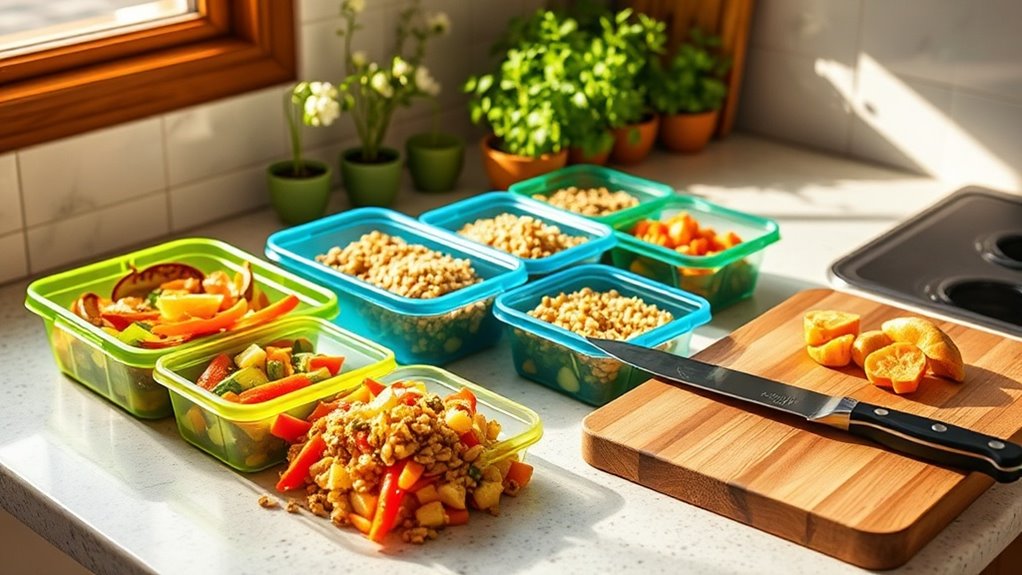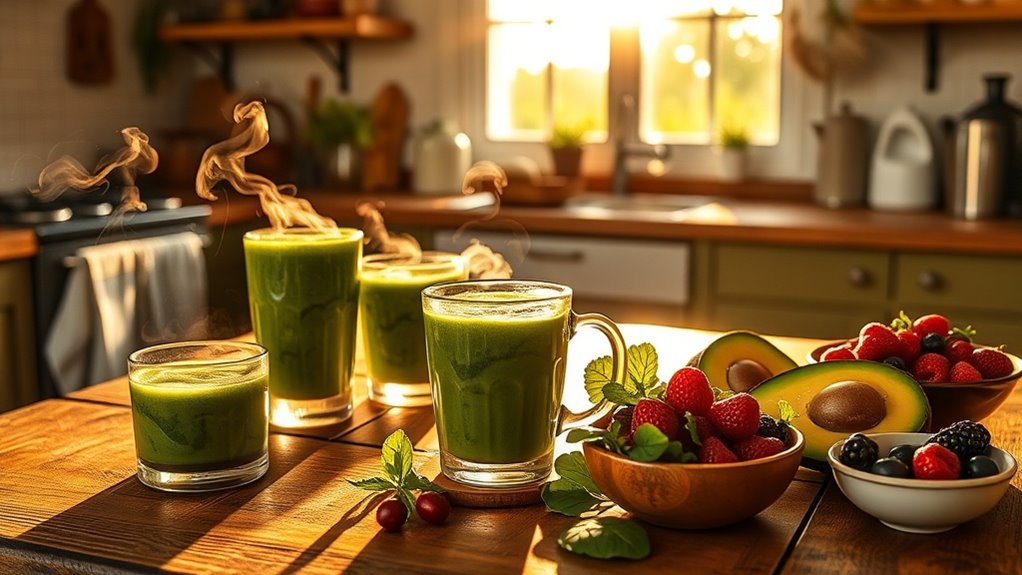A Beginner’s Guide to Meal Prepping That Actually Works
Did you know that meal prepping can save you up to $1,500 a year on groceries? With the right approach, you can streamline your cooking process and make healthier choices. But where do you start? It’s not just about having a plan; it requires the right tools and techniques to ensure success. In the following sections, you’ll discover practical strategies that can transform your meal prep experience.
Understanding the Basics of Meal Prepping
Meal prepping is an efficient strategy that can transform your approach to cooking and eating.
By dedicating a few hours each week, you can create easy meal prep options that save time and reduce stress during busy weekdays.
Start by planning balanced meals and preparing ingredients in advance.
This method promotes healthier choices and helps you manage portions better, making meal time enjoyable. Consistently engaging in meal prep can help avoid unhealthy choices and support your weight loss goals.
Essential Tools and Containers for Success
To set yourself up for meal prep success, having the right tools and containers is crucial. Invest in high-quality containers that are microwave-safe, stackable, and leak-proof. A sharp knife and cutting board are essential for efficient chopping. Here’s a quick guide:
| Tool | Purpose | Recommendation |
|---|---|---|
| Containers | Store meals | Glass or BPA-free plastic |
| Cutting board | Food prep | Bamboo or plastic |
| Knife | Cutting ingredients | Chef’s knife |
| Measuring cups | Portion control | Set of various sizes |
| Food scale | Accurate portioning | Digital scale |
Incorporating airtight storage solutions helps keep meals fresh and flavorful.
Planning Your Weekly Menu
When you plan your weekly menu, you not only save time but also ensure balanced nutrition for you and your family. Start by choosing a variety of proteins, whole grains, and vegetables for each meal. Consider incorporating leftovers creatively to minimize waste. Allocate specific meals for busy days, and remember to review dietary preferences to make it enjoyable for everyone. Additionally, this practice can significantly boost adherence to balanced diets, maintaining a calorie deficit without deprivation.
Tips for Efficient Cooking and Storage
While juggling cooking and storage, using efficient strategies can significantly reduce your prep time and keep your meals fresh.
Batch cook ingredients like grains and proteins together to save time. Use high-quality, clear containers to maintain freshness and easily identify contents.
Label meals with dates to avoid spoilage. Lastly, utilize your freezer for longer storage, ensuring quick meals are always on hand. Additionally, consider implementing time-saving techniques like pre-chopping vegetables to streamline the preparation process.




